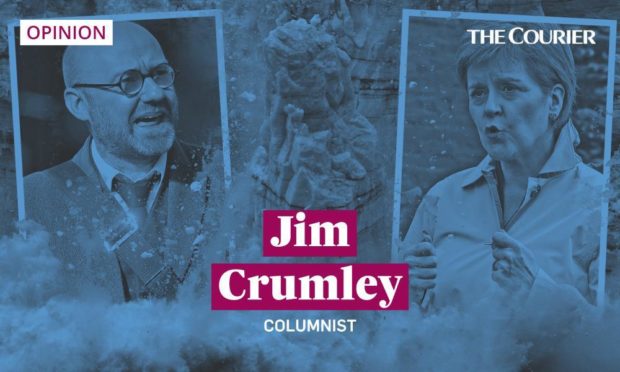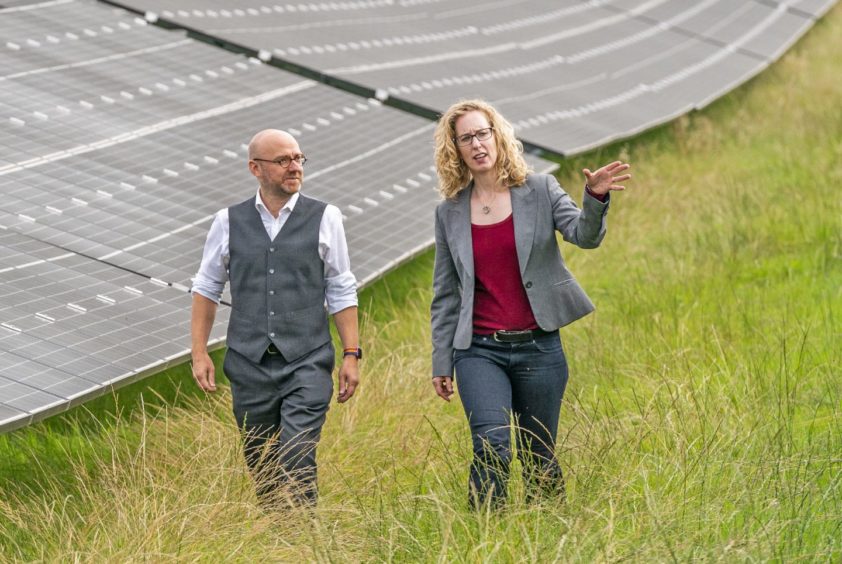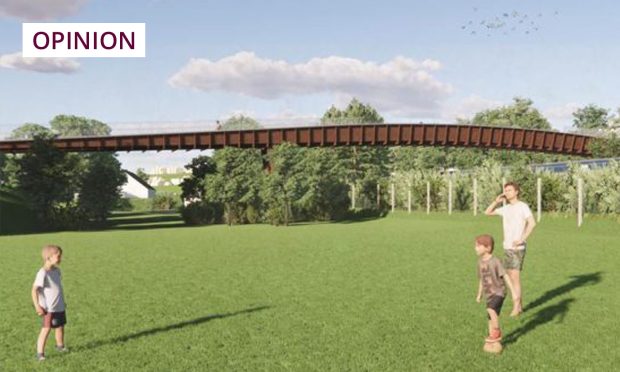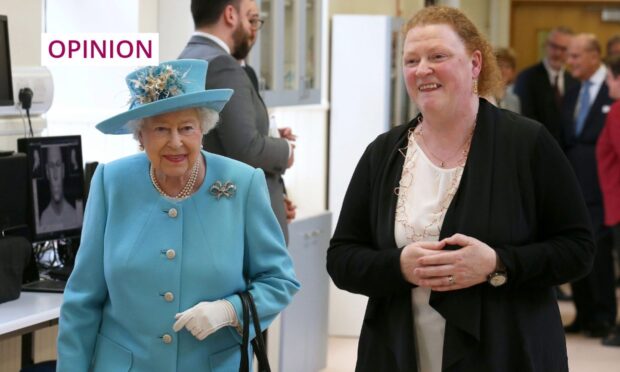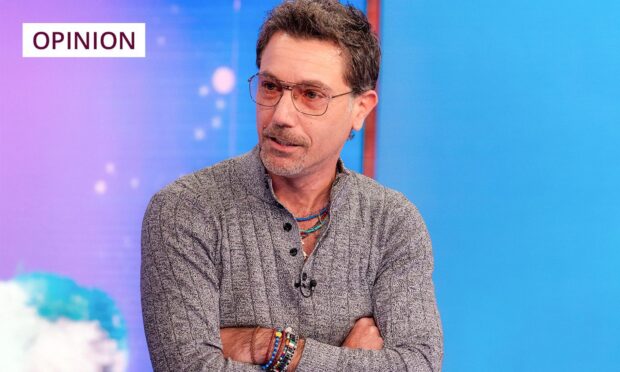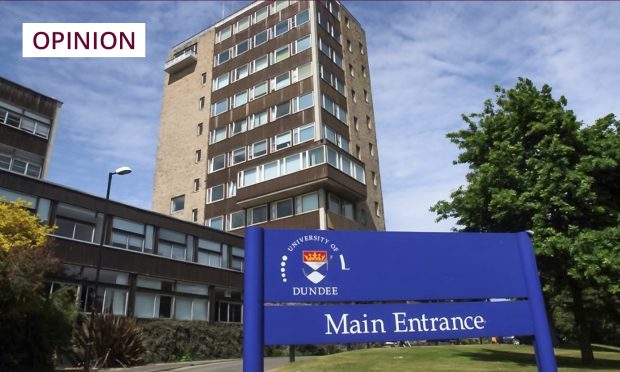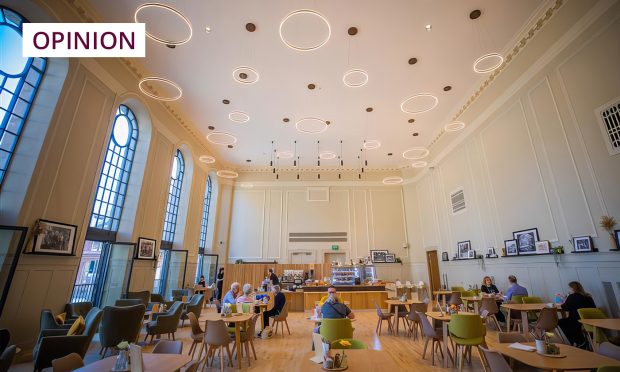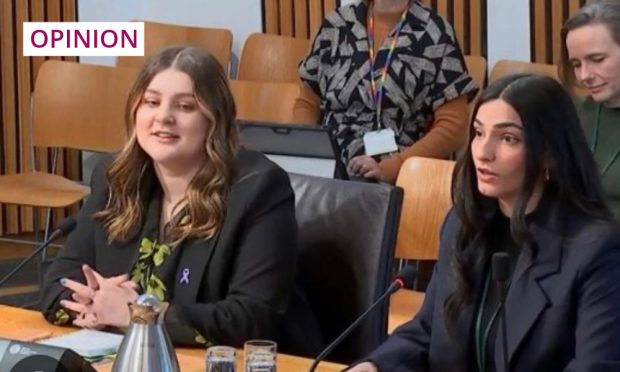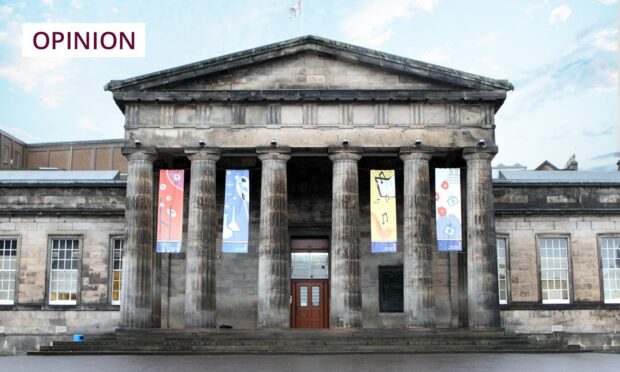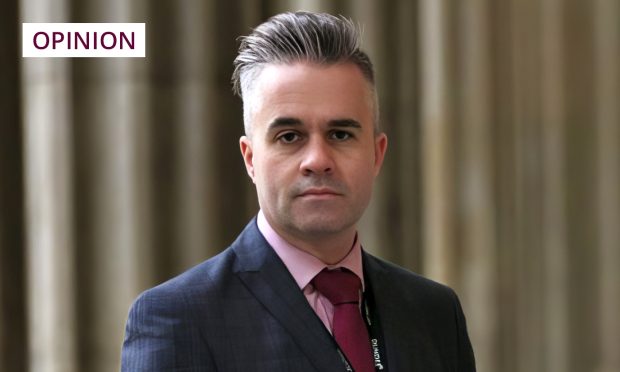Is there a more overworked cliché in the rarefied language of politics than the movement of tectonic plates?
In the wider world beyond politics, and which politics at its best strives to serve, tectonic plates are pieces of the Earth’s crust.
Every now and then, they are nudged from beneath by an upheaval of fire and rock.
This has consequences for the outer layer of the planet, in the form of an earthquake for example, beyond which the land will be irrevocably changed.
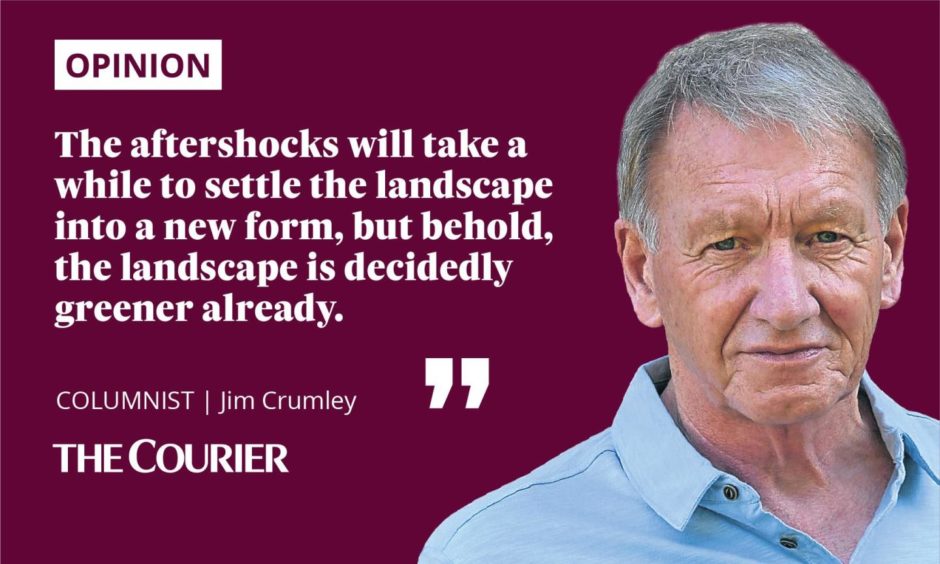
Some of these “pieces of the Earth’s crust” are the size of continents.
There is, for example, a Eurasian tectonic plate, which, as the name suggests, is the size of Eurasia.
And in a corner of Eurasia called Edinburgh at the weekend –quite unremarked by the geology of the wider world but almost off the Richter scale of politics – the tectonic plate heaved and the landscape shuddered.
The aftershocks will take a while to settle the landscape into a new form, but behold, the landscape is decidedly greener already.
When the membership of the Scottish Greens voted for a partnership with the Scottish Nationalists and two seats in the cabinet of the Scottish Government, the landscape of Scottish politics was reconfigured.
Reasons for cheer in Scottish politics
(1) I am a nature writer with an awareness of many of the environmental problems that beset Scotland. It is an awareness gathered at first hand through thousands of hours in nature’s company, watching and writing it down.
I am frustrated that Scottish politicians of all hues have failed to devote the required resources or demonstrate the courage to tackle those vested interests that have bedeviled the land for generations now.
I hope the Green influence will address that shortcoming in Scottish politics.
(2) For as long as I have been old enough to vote, I have been an enthusiast for Scottish independence.
So now, the only party than can deliver independence in government has just added a new environment-thirled and pro-independence element at the heart of that government.
As a result, the chances were never higher of achieving both an independent Scotland that is actively pro-European and a Scotland determined to heal and invigorate its natural environment.
Quite simply, there is no other route to bringing about the kind of Scotland to which many of its natives aspire.
A world beyond Scottish politics
There is also this. Beyond the self-interest of Scottish politics and Scotland’s health as a nation, there is the wider question of the health of the planet.
Regardless of what the governments of the world commit to at the COP summit in November, real progress will be kick-started by role models.
My ambition for Scotland is that it becomes one.
That it demonstrates a commitment to the health of our natural environment that is beyond reproach.
Role models don’t have to be huge countries, they just have to be persuasive.
In 100 days Glasgow welcomes #COP26, the world’s biggest summit on climate change.
Countries from around the world will agree action to tackle the global climate emergency.
We need everyone to play their part. Find out what you can do at https://t.co/trvGHzov2k#LetsDoNetZero pic.twitter.com/GaIHSijIIZ
— Scottish Government (@scotgov) July 23, 2021
It won’t be easy. Land ownership and land use in much of Scotland is strangled by a Victorian arm lock that is anti-nature and must be broken.
Too often the relationship between landowners and ministers has been too close.
And too often, professional conservation has had to fight to be heard, to try and counter the resistance of governments and private landowners instead of being encouraged by them.
An appropriate first gesture would be to abolish the government’s woefully timid agency that advises on the natural environment, NatureScot.
It should be replaced with something with all the radical vigour that the job requires.
Future generations will know what we did
Throughout the rise of the global environment to the top of the world’s political agenda, and for that matter throughout the negotiations between the Scottish Nationalists and the Scottish Greens, my mind has kept going back to an article I read two years ago by an Icelandic author, Andri Snaer Magnason.
He was given the extraordinary commission by a group of American academics of writing a eulogy for a glacier.
Scientists bid farewell to Okjökull, the first Icelandic glacier lost to climate change, with a monument that features "A letter to the future" https://t.co/ry3AROsI7u pic.twitter.com/bU88CstxbK
— CNN (@CNN) August 18, 2019
Iceland’s glaciers are melting, all of them. Almost all the glaciers in the world are.
But one in Iceland has actually died.
In his article, Mr Magnason wrote:
“A dying glacier is not a dramatic event. The drama of a melting glacier is no more dramatic than springtime: one day there is snow and the next day it is gone. We are living through the Great Thaw, the Big Melt. We have to remind ourselves that this is not normal…”
The academics asked Mr Magnason to write the text for a plaque to commemorate the glacier that died. What he wrote for as yet unborn generations of Icelanders was this:
“We know what is happening and what needs to be done. Only you know if we did it.”
That is exactly where we stand right now, contemplating the future of Scotland, the future of planet Earth.
If you have never been to the Scottish Parliament, the wall on the Canongate has a collection of inspirational quotations relevant to what I still think is an inspirational building.
I dare this new-look, optimistic Scottish Government to add Mr Magnason’s words to the wall.
And maybe drop the tectonic plates from the speeches.
